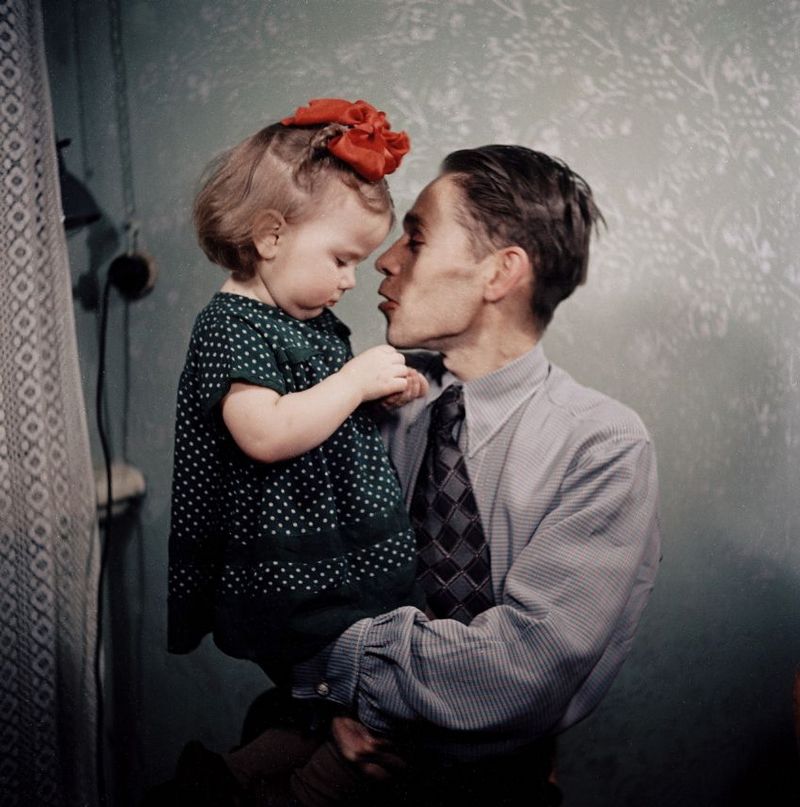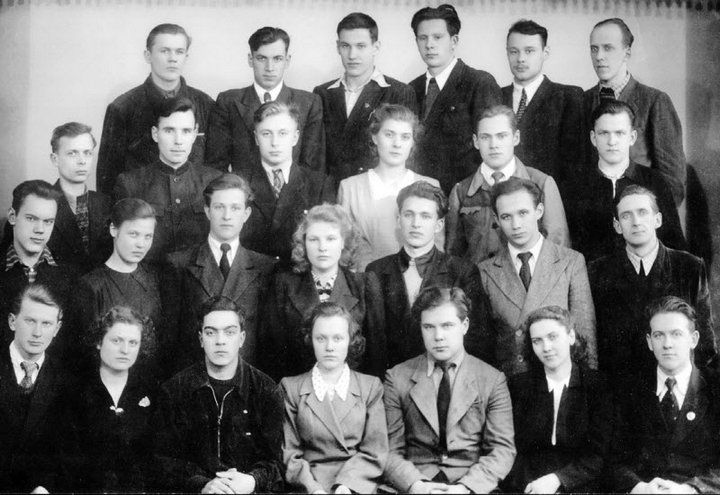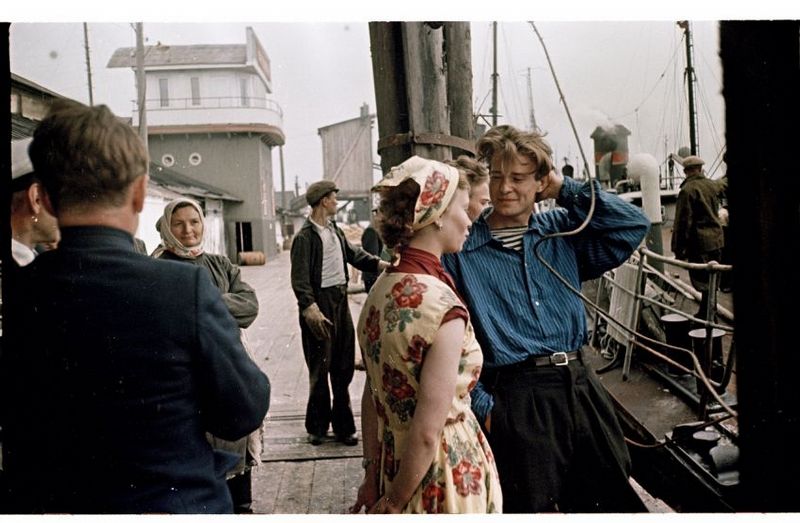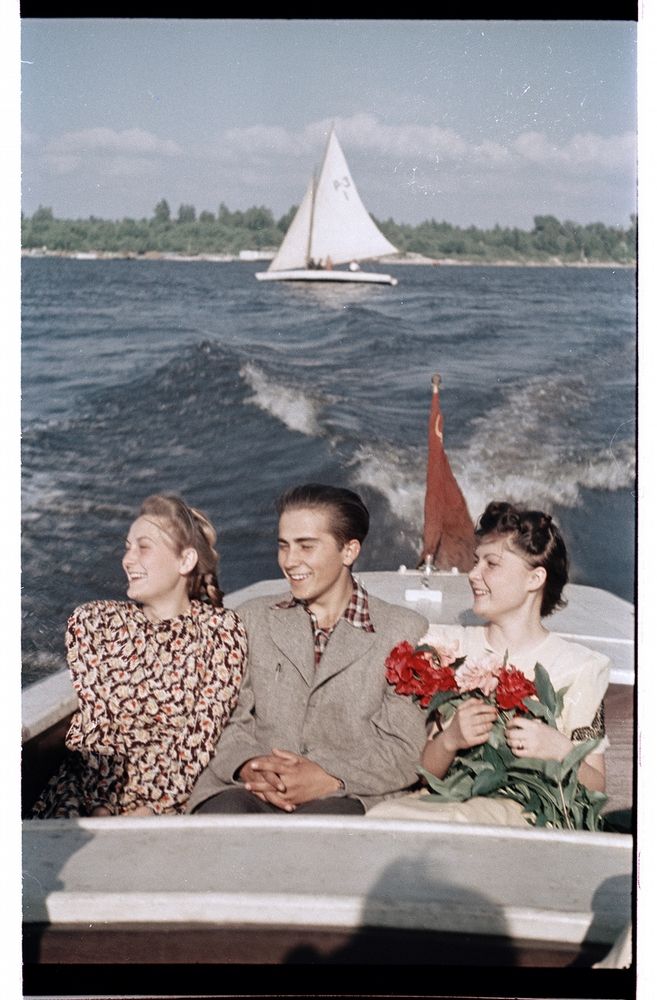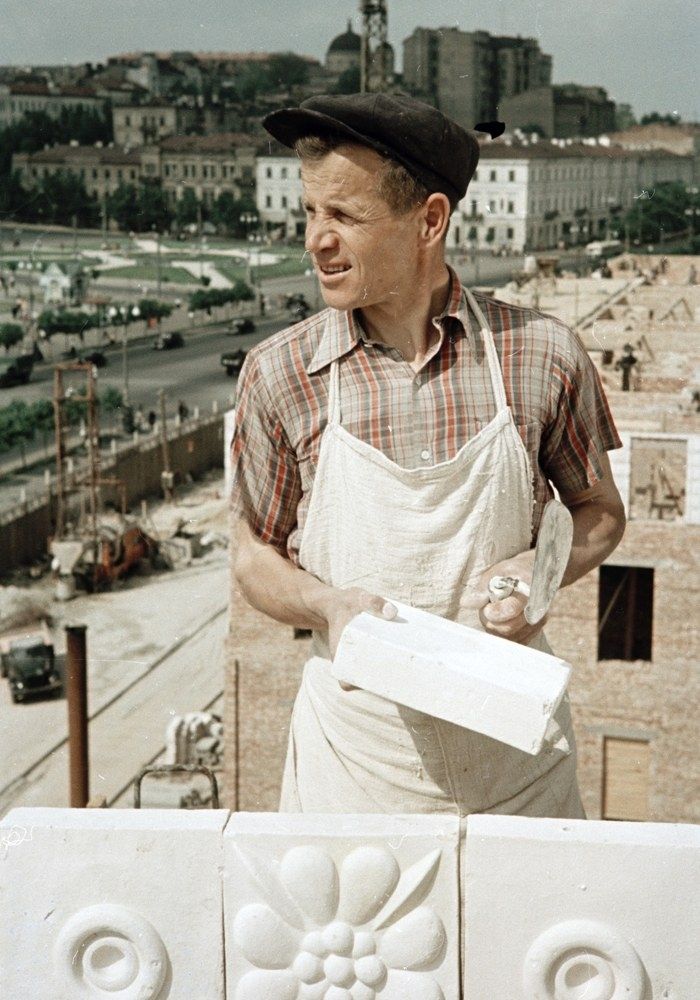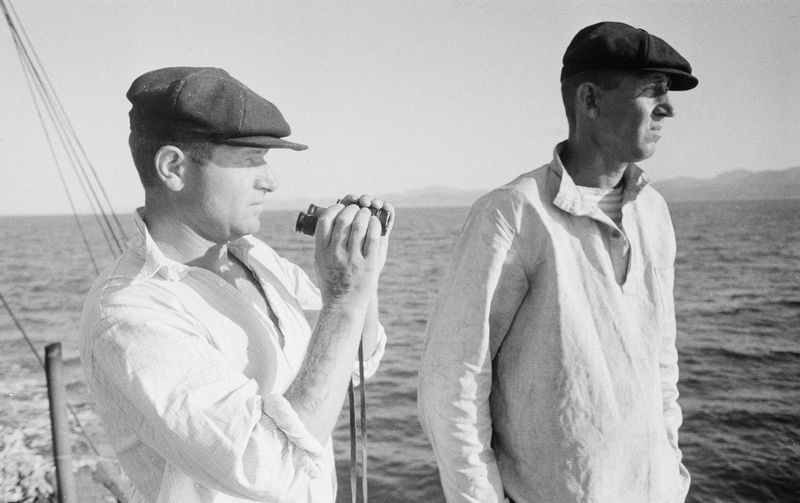A thread to discuss various aspects of civilian textile industry and fashion in the 1920's to 50's Soviet Union.
The discussion originated in the "Show us their suits" thread: http://www.thefedoralounge.com/showthread.php?9860-Show-us-their-suits/page109
Repeating first some aspects mentioned in the previous thread:
1. I suggested that fashion/tailoring in the USSR was largely following central European/German trends:
Russian/Soviet tailoring certainly was also largely following the "German school".
The 30' Munich tailoring periodical "Rundschau" showed a world map for international subscriptions for it's instructions and patterns.
Moscow and Leningrad are among them (and all capitals of Eastern/S-Eastern Europe). I have to see whether I have the map.
Looking at this post-war chart of Soviet style evolution, I'd say it clearly follows continental European trends until the war's end.
A 1946/47 tailoring instruction for occupied Berlin mentioned that Russians prefer very wide trousers (60 cm foot width), shoulders and lapels
at a time when French/British/German tailoring was already going for tapered more narrow ankled trousers and narrower lapels.
The Russians also liked very long coats at that time.


Samarov, Cheremnykh: "Model und Design Menswear" 1949
2. Regarding the extreme rarity of preserved Soviet civilian textiles compared to Germany:
Germany despite all the destruction during the war years, was one of the most prosperous countries before the war... and some years after the war again.
Apart from the hard 1945-48 years Germany also didn't have a comparable poverty problem like the Soviet Union. The differences in living standards were severe.
The clothes produced in Germany also were of extremely high quality - both factory and tailor-made - and reasonably affordable (a weeks salary got a worker a good quality off-the-rack suit).
A suit during Stalin's rule was a major investment for the average worker... and if he got something, it was mostly of relatively low quality.
So there are several historical/economic reasons why there are much more German than Soviet clothes preserved.
I will follow up with some translations of German articles regarding Soviet clothing industry.
The discussion originated in the "Show us their suits" thread: http://www.thefedoralounge.com/showthread.php?9860-Show-us-their-suits/page109
Repeating first some aspects mentioned in the previous thread:
1. I suggested that fashion/tailoring in the USSR was largely following central European/German trends:
Russian/Soviet tailoring certainly was also largely following the "German school".
The 30' Munich tailoring periodical "Rundschau" showed a world map for international subscriptions for it's instructions and patterns.
Moscow and Leningrad are among them (and all capitals of Eastern/S-Eastern Europe). I have to see whether I have the map.
Looking at this post-war chart of Soviet style evolution, I'd say it clearly follows continental European trends until the war's end.
A 1946/47 tailoring instruction for occupied Berlin mentioned that Russians prefer very wide trousers (60 cm foot width), shoulders and lapels
at a time when French/British/German tailoring was already going for tapered more narrow ankled trousers and narrower lapels.
The Russians also liked very long coats at that time.


Samarov, Cheremnykh: "Model und Design Menswear" 1949
2. Regarding the extreme rarity of preserved Soviet civilian textiles compared to Germany:
Germany despite all the destruction during the war years, was one of the most prosperous countries before the war... and some years after the war again.
Apart from the hard 1945-48 years Germany also didn't have a comparable poverty problem like the Soviet Union. The differences in living standards were severe.
The clothes produced in Germany also were of extremely high quality - both factory and tailor-made - and reasonably affordable (a weeks salary got a worker a good quality off-the-rack suit).
A suit during Stalin's rule was a major investment for the average worker... and if he got something, it was mostly of relatively low quality.
So there are several historical/economic reasons why there are much more German than Soviet clothes preserved.
I will follow up with some translations of German articles regarding Soviet clothing industry.
Last edited:

























